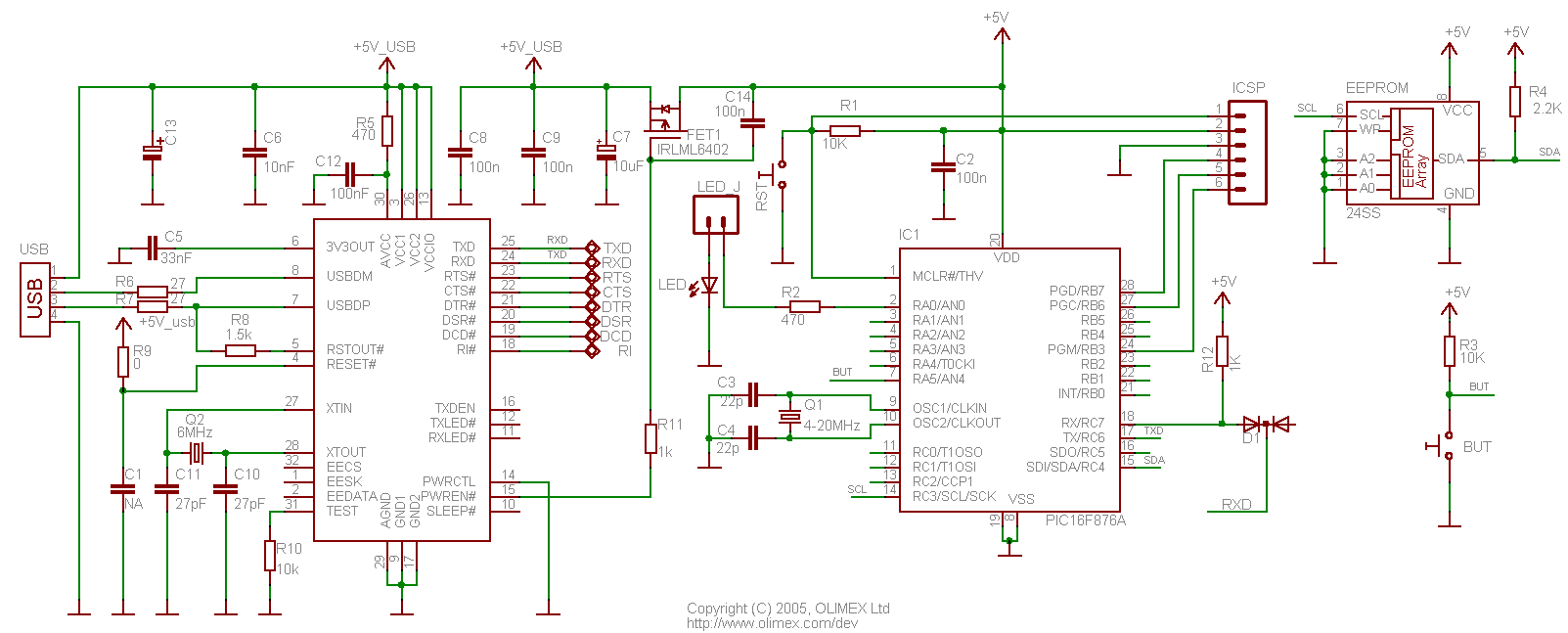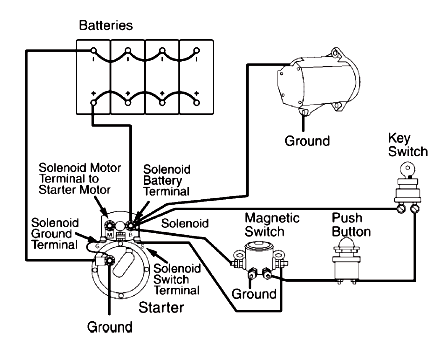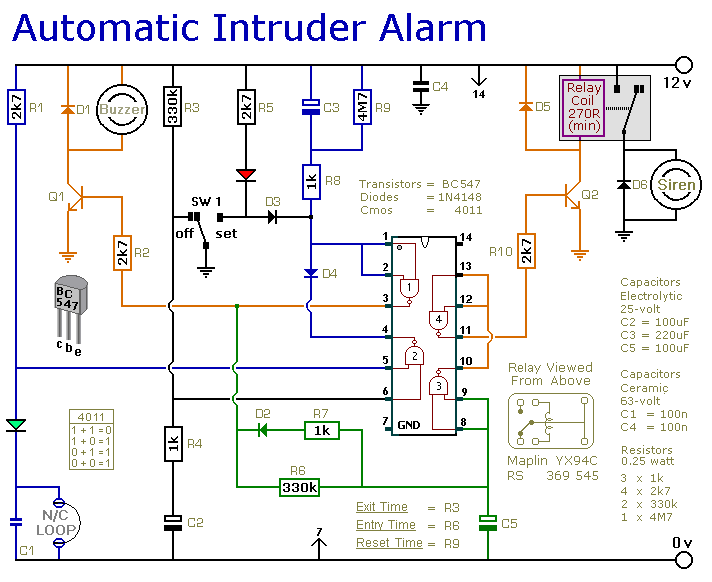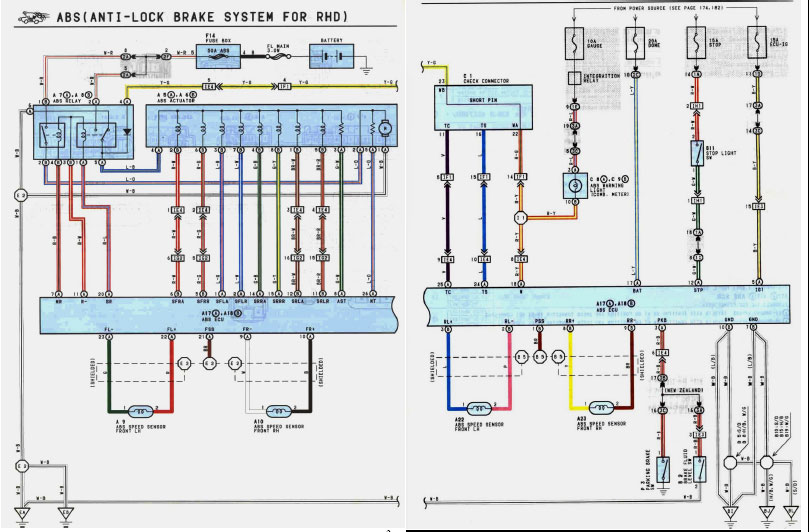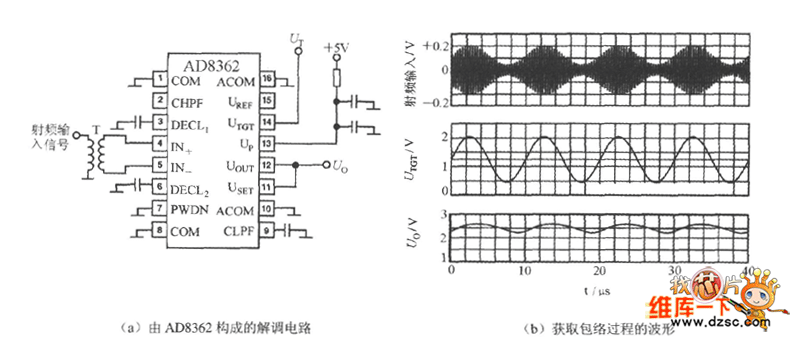
ADEV Development System
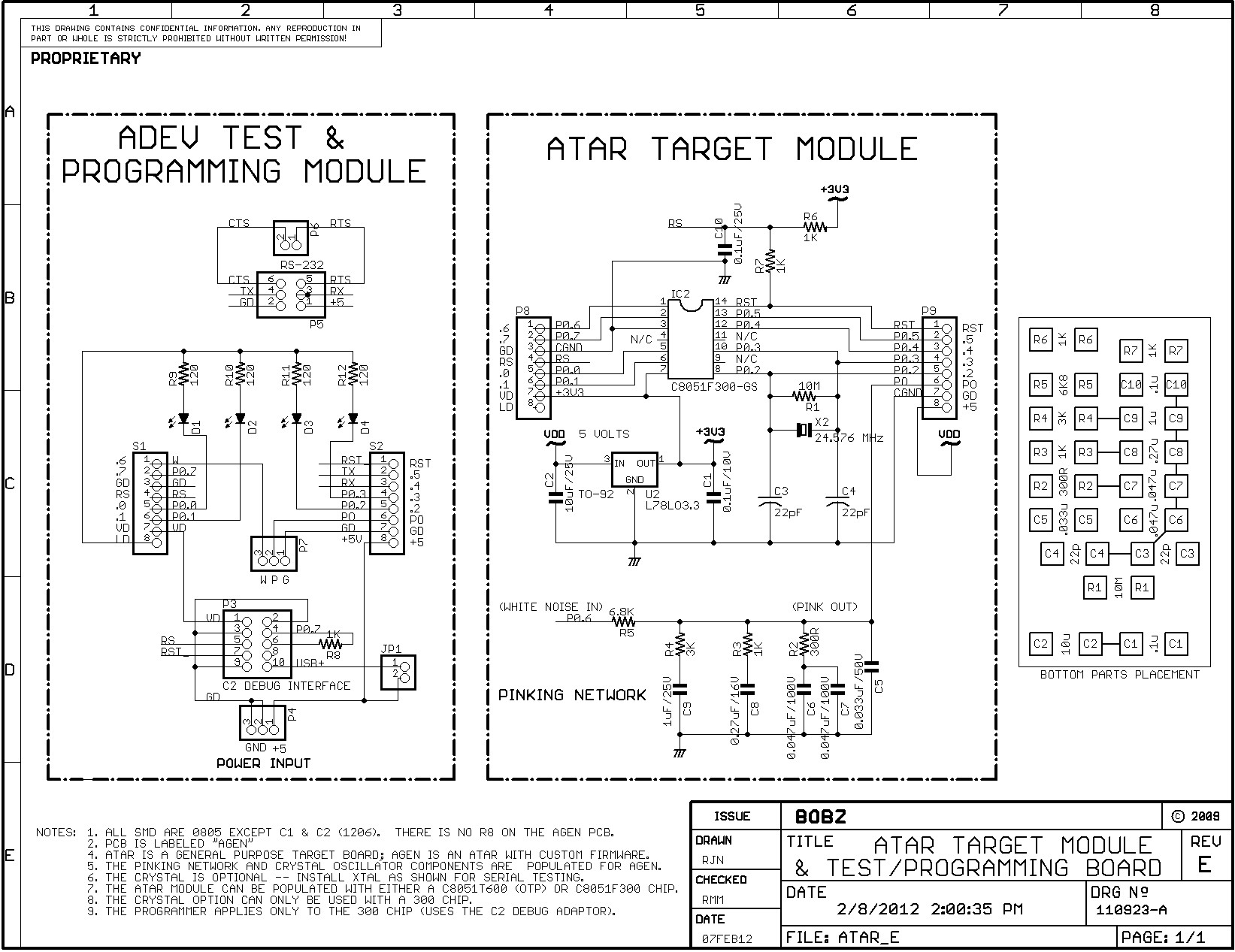
The ADEV Development System comprises the ATAR Target Module and the ADEV Test/Programming Module. These modules, along with development tools from Silicon Laboratories, Inc. (SL), facilitate the development of custom applications for the C8051F300 and C8051T600 processors. In this documentation, "ATAR" refers to the ATAR Module, and "ADEV" refers to the ADEV Test/Programming Module. The term "AGEN" denotes an ATAR Target Module that is populated and programmed to function as an audio test and generator module. The system was initially designed to develop code for the AGEN Module. The ADEV system primarily targets users aiming to create custom firmware for the 300 and 600 chips, but it can also be utilized to upgrade or modify the firmware on an AGEN audio generator module.
The ATAR Module features an on-board regulator, a reset circuit, and a general-purpose resistor/capacitor (RC) network located on the underside of the board. All chip pins and regulated power are accessible via two single-row pin headers with a 0.1-inch spacing, allowing for easy mounting and breadboarding. Consequently, the ATAR is well-suited for projects requiring a "ready to use" processor module that supports features such as eight I/O pins, an A/D converter, a pulse width modulator, timers, and a Programmable Counter Array (PCA). The ATAR Target Module consists of a target board labeled "AGEN," populated with either a 300 or a 600 chip, both available in 14-pin SOIC packages and pin-compatible. The 600 chip is a One Time Programmable (OTP) version of the 300 chip, lacking support for an external crystal oscillator and exhibiting some other minor differences.
The ADEV Test/Programming Board accommodates an assembled ATAR Module (or AGEN Module) and includes features such as a serial port interface connector and test LEDs for module testing. When an ATAR is populated with a 300 chip, the Test/Programming Board can be employed to program the chip. Conversely, the ATAR with a 600 OTP chip functions as a pre-programmed Target Module. It is important to note that the OTP 600 chip must be programmed with a specific SL programmer before installation on the ATAR Target Module. An ATAR with a 300 chip serves as a programmable Target Module, allowing programming with ADEV and standard SL programming tools (e.g., Debug Adaptor and IDE software). For instance, the SL Debug Adaptor connects to a 10-pin shrouded connector on the Test/Programming board, enabling programming of the 300 chip with the ADEV Module. Although the 600 chip requires a separate SL programmer for programming, the Test/Programming platform remains functional for testing ATAR modules populated with 600 chips. The ADEV serial interface and LEDs can be utilized for testing 600 chips that incorporate these features.
The documentation includes several photographs: Photo 1 displays a completed ATAR Module (labeled "AGEN") populated with a 300 chip and crystal; Photo 2 illustrates an ADEV Test/Programming Module mounted on a weighted breath mint tin with a 5-Volt power umbilical; Photo 3 features a complete development system, including a Target Module and a commercial RS-232 adaptor. For additional details, refer to Schematic 1 titled "ATAR TARGET MODULE & TEST/PROGRAMMING BOARD." This schematic illustrates the components, circuitry, and pinouts for the ATAR module, as well as the wiring of the Test/Programming Board. It also depicts the wiring and board layout for the "pinking" network used in the AGEN Module. In alternative applications, the pads for this network may be repurposed for general-purpose wiring of an RC network or left unpopulated. Connecting the "LD" pin to either a supply voltage or ground allows for testing the port pins in either configuration.
The ADEV Development System provides a robust platform for developing and testing applications tailored to the C8051F300 and C8051T600 processors. The integration of the ATAR Target Module and ADEV Test/Programming Module, along with the associated development tools, enables engineers to effectively create, modify, and validate firmware and hardware solutions in a streamlined manner.The ADEV Development System consists of the ATAR Target Module and the ADEV Test/Programming Module. The ATAR Target Module and the ADEV Test/Programming Module, together with development tools from Silicon Laboraties, Inc. (SL), can be used to develop custom applications for C8051F300 and C8051T600 processors (300 and 600 chips).
Throughout the r emainder of this documentation, the term "ATAR" refers to the ATAR Module and the term "ADEV" refers to the ADEV Test/Programming Module. The term "AGEN" refers to an ATAR Target Module populated and programmed to provide an audio test and generator module (see AGEN Module ).
The development system was originally designed to develop code for the AGEN (Audio GENerator) Module described elsewhere in this documentation. The ADEV system is primarily intended for users who want to develop custom firmware for 300 and 600 chips.
But, the system can also be used to upgrade or change the firmware on an AGEN audio generator module. The ATAR Module provides an on-board regulator, a reset circuit and a general-purpose resistor/capacitor (RC) network (on the bottom of the board).
All chip pins and regulated power are brought out to two single-row pin headers that are tenth-inch spaced to facilitate easy mounting and breadboarding. Thus, the ATAR is suitable for projects that require a "ready to use" processor module that supports chip features such as eight I/O pin, an A/D converter, a pulse width modulator, timers and a Programmable Counter Array (PCA).
The ATAR Target Module consists of a target board (labeled "AGEN") populated with either a 300 or a 600 chip. These chips are both available in 14-pin SOIC packages and are pin-compatible. The 600 chip is a One Time Programmable (OTP) version of the 300 chip, but it does not support an external crystal oscillator (there are also some other minor differences).
The ADEV Test/Programming Board accepts an assembled ATAR Module (or AGEN Module) and has facilities such as a serial port interface connector and test LEDs for module testing. In the case of an ATAR populated with a 300 chip, the Test/Programming board can be used to program the chip.
The ATAR populated with a 600 OTP chip provides a pre-programmed Target Module. Note that the OTP 600 chip must be programmed with a special SL programmer before being installed on the ATAR Target Module. An ATAR populated with a 300 chip provides a programmable Target Module. When using an ATAR populated with a 300 chip, the chip can be programmed with ADEV and the standard SL programming tools (i.
e. , Debug Adaptor and IDE software). For example, the SL Debug Adaptor plugs into a 10-pin shrouded connector on the Test/Programming board, allowing a 300 chip to be programmed with the ADEV Module. As mentioned above, when a 600 chip is used, it must be programmed with a separate SL programmer. However, the Test/Programming platform can still be used to test ATAR modules populated with 600 chips.
For example, the ADEV serial interface and LEDs can be used to test 600 chips that use these features. Photo 1 shows a completed ATAR Module (board is labeled "AGEN"), populated with a 300 chip and crystal.
Photo 2 shows an ADEV Test/Programming Module mounted on a weighted breath mint tin and with a 5-Volt power umbilical. Photo 3 shows a complete development system, including a Target Module and a commercial RS-232 adaptor.
For the following, refer to Schematic 1 titled "ATAR TARGET MODULE & TEST/PROGRAMMING BOARD. " The schematic shows the components, circuitry and pinouts for the ATAR module and the wiring of the Test/Programming Board. Also shown is the wiring and board layout for the "pinking" network used for the AGEN Module. In other applications, the pads for this network can be used for general-purpose wiring of an RC network or left unpopulated.
Wiring the "LD" pin to either a supply voltage or ground allows the port pins to be tested in either "s 🔗 External reference
The ATAR Module features an on-board regulator, a reset circuit, and a general-purpose resistor/capacitor (RC) network located on the underside of the board. All chip pins and regulated power are accessible via two single-row pin headers with a 0.1-inch spacing, allowing for easy mounting and breadboarding. Consequently, the ATAR is well-suited for projects requiring a "ready to use" processor module that supports features such as eight I/O pins, an A/D converter, a pulse width modulator, timers, and a Programmable Counter Array (PCA). The ATAR Target Module consists of a target board labeled "AGEN," populated with either a 300 or a 600 chip, both available in 14-pin SOIC packages and pin-compatible. The 600 chip is a One Time Programmable (OTP) version of the 300 chip, lacking support for an external crystal oscillator and exhibiting some other minor differences.
The ADEV Test/Programming Board accommodates an assembled ATAR Module (or AGEN Module) and includes features such as a serial port interface connector and test LEDs for module testing. When an ATAR is populated with a 300 chip, the Test/Programming Board can be employed to program the chip. Conversely, the ATAR with a 600 OTP chip functions as a pre-programmed Target Module. It is important to note that the OTP 600 chip must be programmed with a specific SL programmer before installation on the ATAR Target Module. An ATAR with a 300 chip serves as a programmable Target Module, allowing programming with ADEV and standard SL programming tools (e.g., Debug Adaptor and IDE software). For instance, the SL Debug Adaptor connects to a 10-pin shrouded connector on the Test/Programming board, enabling programming of the 300 chip with the ADEV Module. Although the 600 chip requires a separate SL programmer for programming, the Test/Programming platform remains functional for testing ATAR modules populated with 600 chips. The ADEV serial interface and LEDs can be utilized for testing 600 chips that incorporate these features.
The documentation includes several photographs: Photo 1 displays a completed ATAR Module (labeled "AGEN") populated with a 300 chip and crystal; Photo 2 illustrates an ADEV Test/Programming Module mounted on a weighted breath mint tin with a 5-Volt power umbilical; Photo 3 features a complete development system, including a Target Module and a commercial RS-232 adaptor. For additional details, refer to Schematic 1 titled "ATAR TARGET MODULE & TEST/PROGRAMMING BOARD." This schematic illustrates the components, circuitry, and pinouts for the ATAR module, as well as the wiring of the Test/Programming Board. It also depicts the wiring and board layout for the "pinking" network used in the AGEN Module. In alternative applications, the pads for this network may be repurposed for general-purpose wiring of an RC network or left unpopulated. Connecting the "LD" pin to either a supply voltage or ground allows for testing the port pins in either configuration.
The ADEV Development System provides a robust platform for developing and testing applications tailored to the C8051F300 and C8051T600 processors. The integration of the ATAR Target Module and ADEV Test/Programming Module, along with the associated development tools, enables engineers to effectively create, modify, and validate firmware and hardware solutions in a streamlined manner.The ADEV Development System consists of the ATAR Target Module and the ADEV Test/Programming Module. The ATAR Target Module and the ADEV Test/Programming Module, together with development tools from Silicon Laboraties, Inc. (SL), can be used to develop custom applications for C8051F300 and C8051T600 processors (300 and 600 chips).
Throughout the r emainder of this documentation, the term "ATAR" refers to the ATAR Module and the term "ADEV" refers to the ADEV Test/Programming Module. The term "AGEN" refers to an ATAR Target Module populated and programmed to provide an audio test and generator module (see AGEN Module ).
The development system was originally designed to develop code for the AGEN (Audio GENerator) Module described elsewhere in this documentation. The ADEV system is primarily intended for users who want to develop custom firmware for 300 and 600 chips.
But, the system can also be used to upgrade or change the firmware on an AGEN audio generator module. The ATAR Module provides an on-board regulator, a reset circuit and a general-purpose resistor/capacitor (RC) network (on the bottom of the board).
All chip pins and regulated power are brought out to two single-row pin headers that are tenth-inch spaced to facilitate easy mounting and breadboarding. Thus, the ATAR is suitable for projects that require a "ready to use" processor module that supports chip features such as eight I/O pin, an A/D converter, a pulse width modulator, timers and a Programmable Counter Array (PCA).
The ATAR Target Module consists of a target board (labeled "AGEN") populated with either a 300 or a 600 chip. These chips are both available in 14-pin SOIC packages and are pin-compatible. The 600 chip is a One Time Programmable (OTP) version of the 300 chip, but it does not support an external crystal oscillator (there are also some other minor differences).
The ADEV Test/Programming Board accepts an assembled ATAR Module (or AGEN Module) and has facilities such as a serial port interface connector and test LEDs for module testing. In the case of an ATAR populated with a 300 chip, the Test/Programming board can be used to program the chip.
The ATAR populated with a 600 OTP chip provides a pre-programmed Target Module. Note that the OTP 600 chip must be programmed with a special SL programmer before being installed on the ATAR Target Module. An ATAR populated with a 300 chip provides a programmable Target Module. When using an ATAR populated with a 300 chip, the chip can be programmed with ADEV and the standard SL programming tools (i.
e. , Debug Adaptor and IDE software). For example, the SL Debug Adaptor plugs into a 10-pin shrouded connector on the Test/Programming board, allowing a 300 chip to be programmed with the ADEV Module. As mentioned above, when a 600 chip is used, it must be programmed with a separate SL programmer. However, the Test/Programming platform can still be used to test ATAR modules populated with 600 chips.
For example, the ADEV serial interface and LEDs can be used to test 600 chips that use these features. Photo 1 shows a completed ATAR Module (board is labeled "AGEN"), populated with a 300 chip and crystal.
Photo 2 shows an ADEV Test/Programming Module mounted on a weighted breath mint tin and with a 5-Volt power umbilical. Photo 3 shows a complete development system, including a Target Module and a commercial RS-232 adaptor.
For the following, refer to Schematic 1 titled "ATAR TARGET MODULE & TEST/PROGRAMMING BOARD. " The schematic shows the components, circuitry and pinouts for the ATAR module and the wiring of the Test/Programming Board. Also shown is the wiring and board layout for the "pinking" network used for the AGEN Module. In other applications, the pads for this network can be used for general-purpose wiring of an RC network or left unpopulated.
Wiring the "LD" pin to either a supply voltage or ground allows the port pins to be tested in either "s 🔗 External reference
